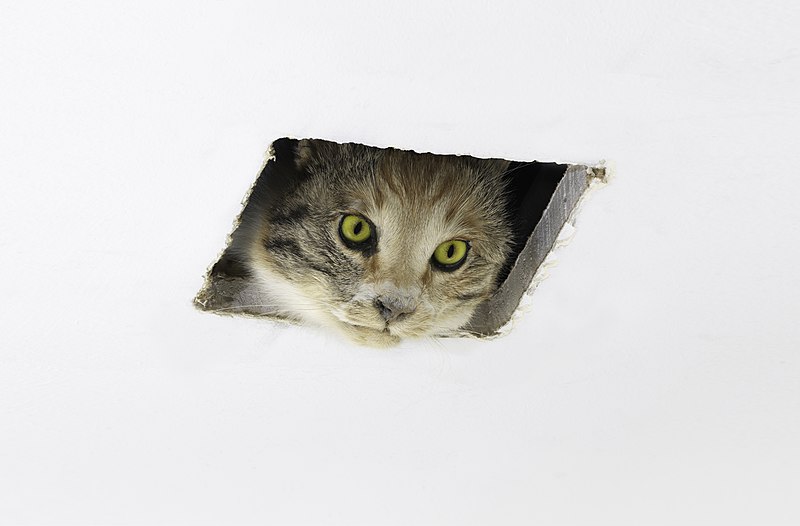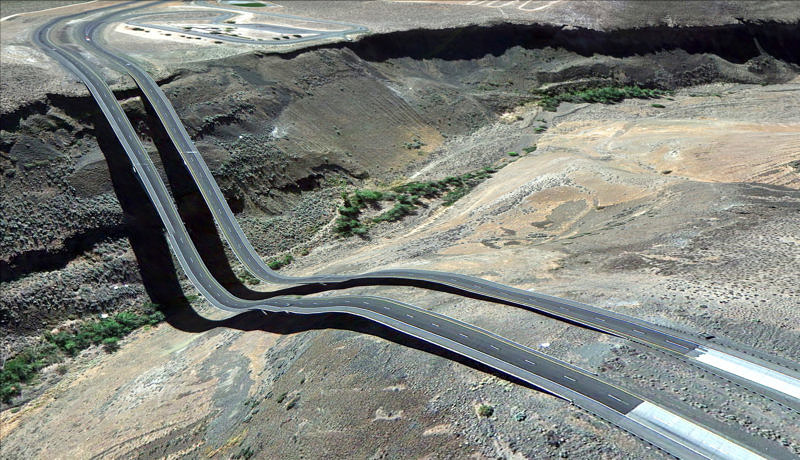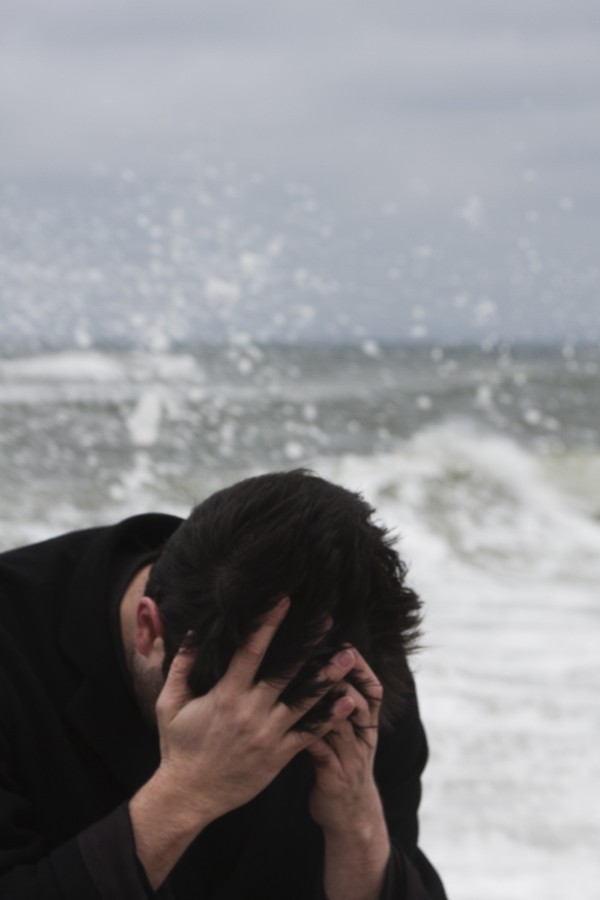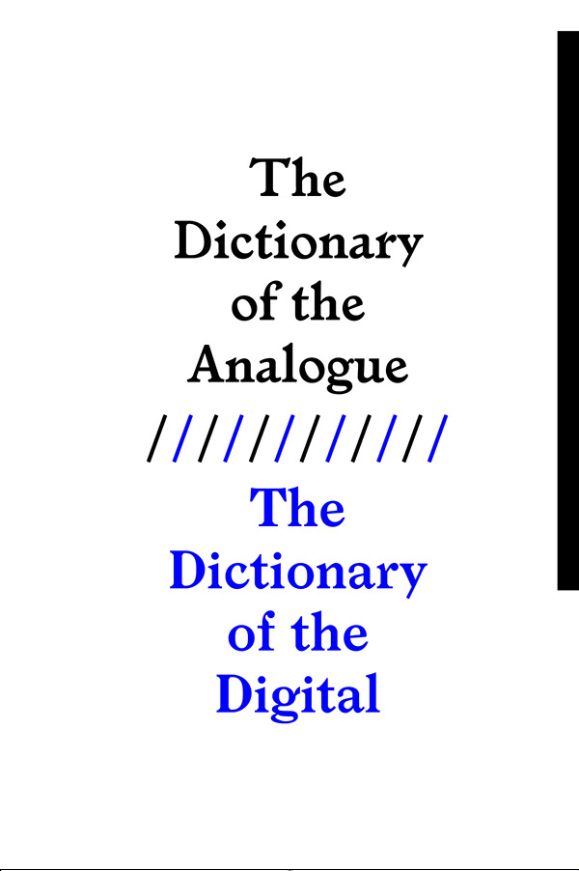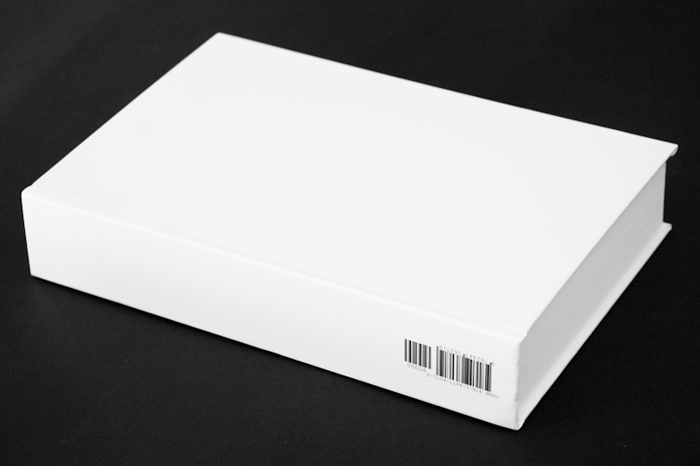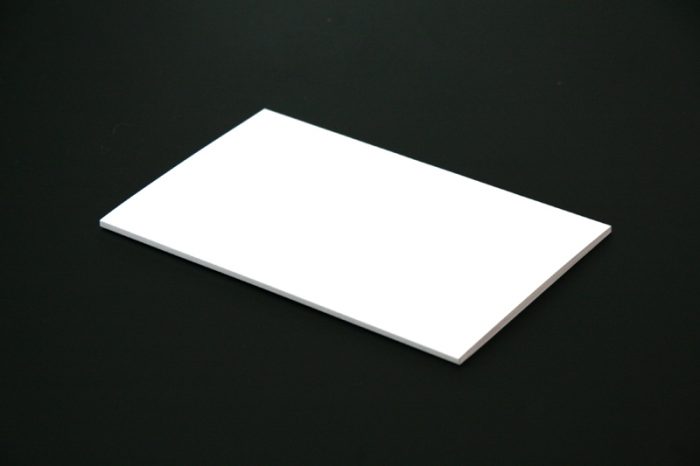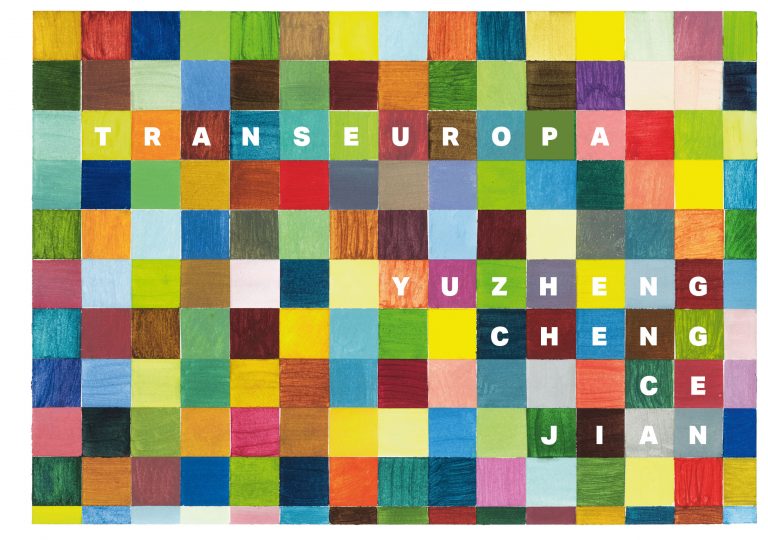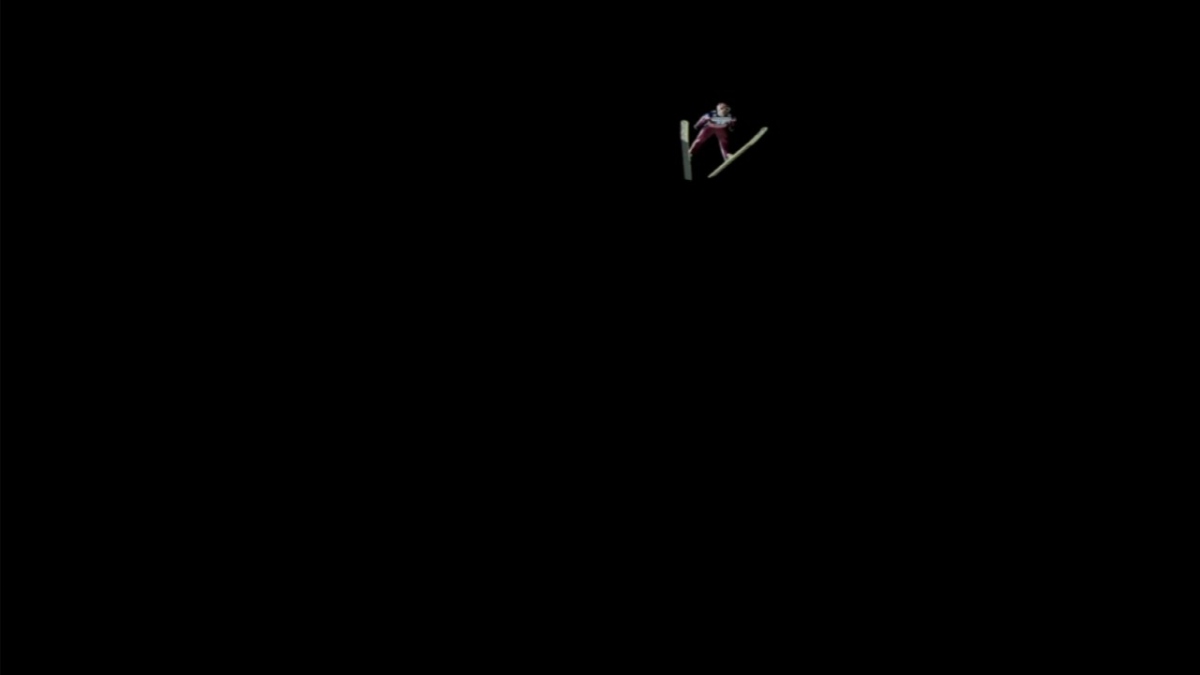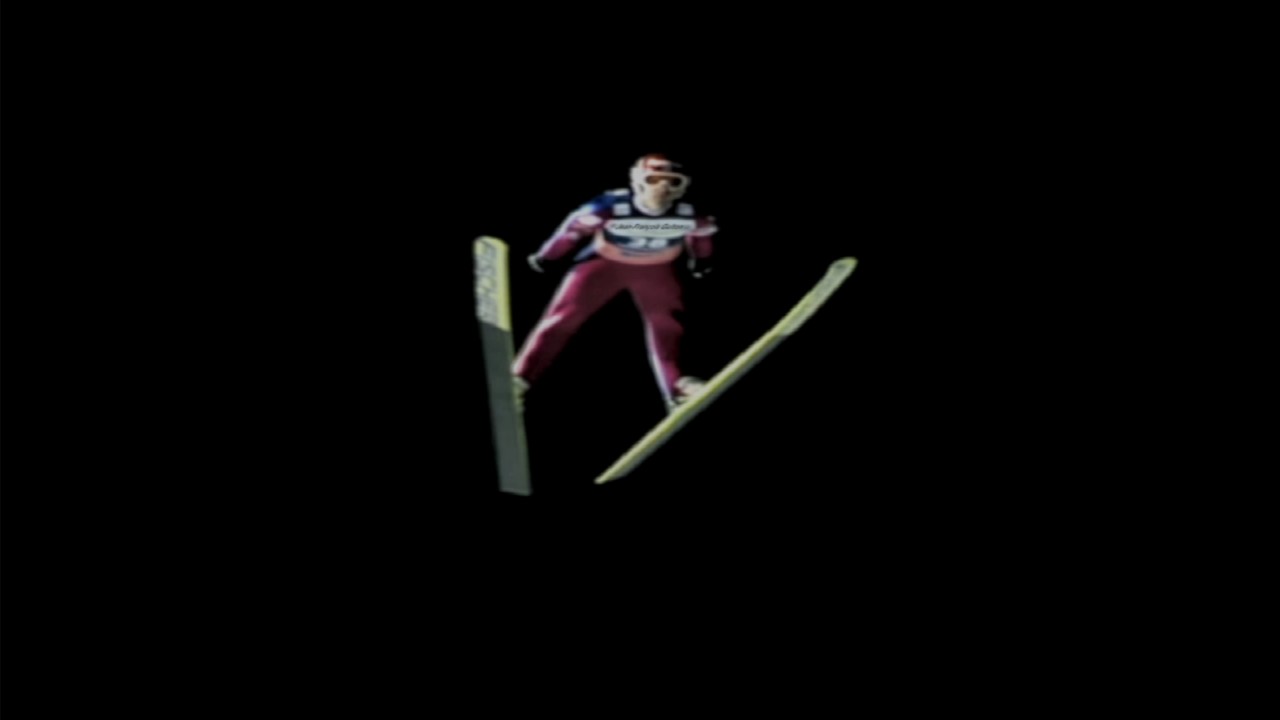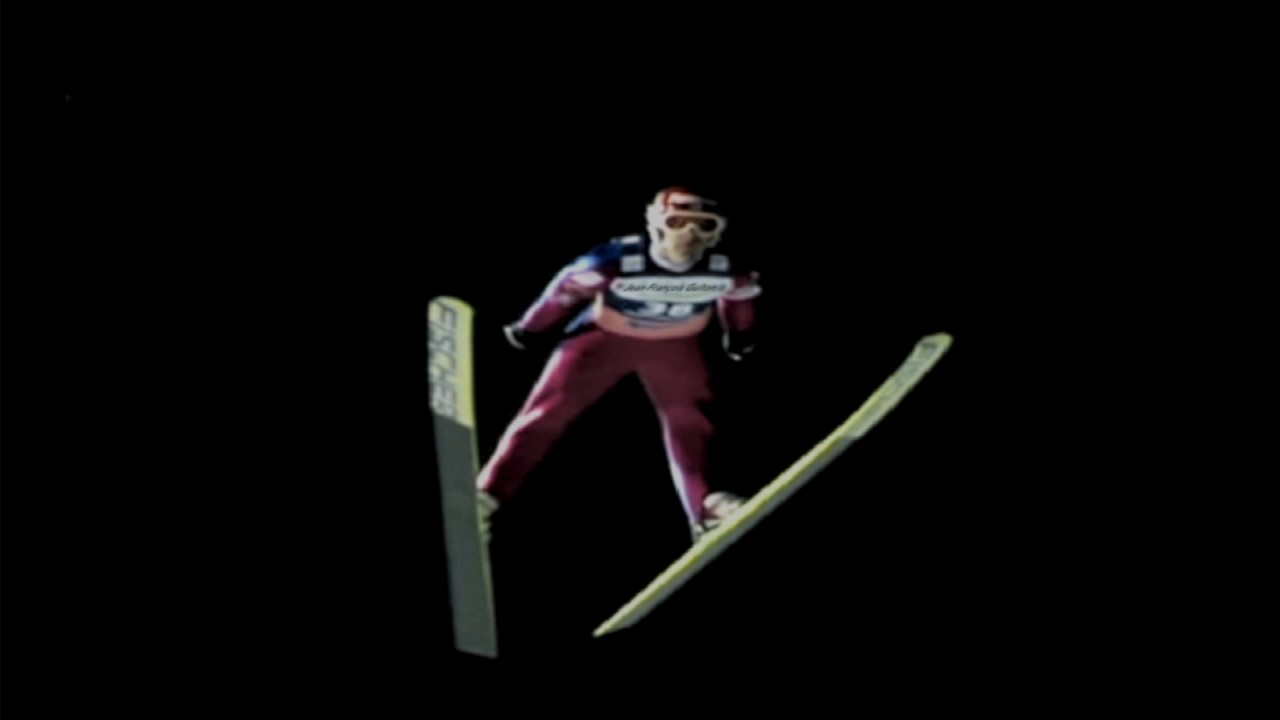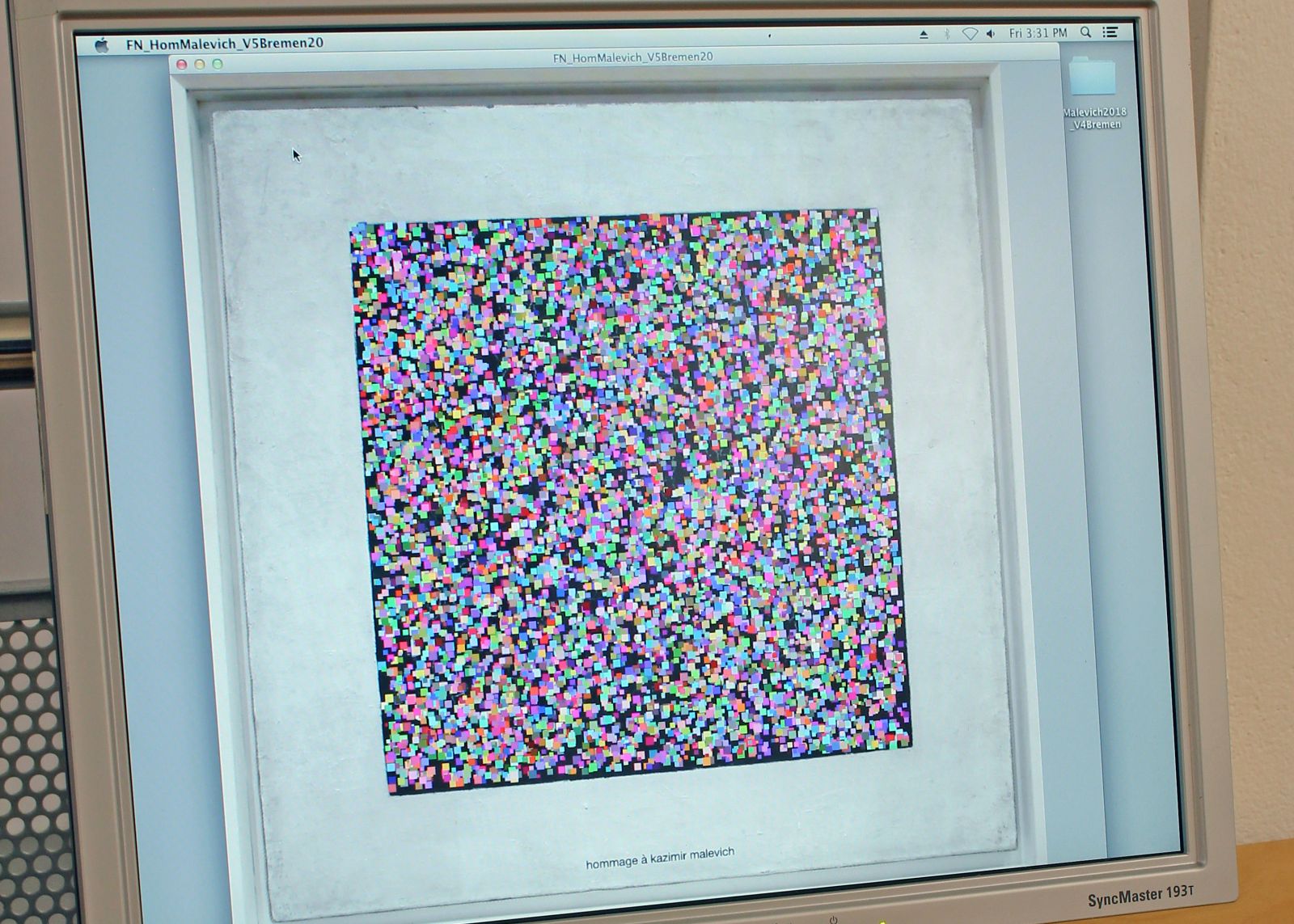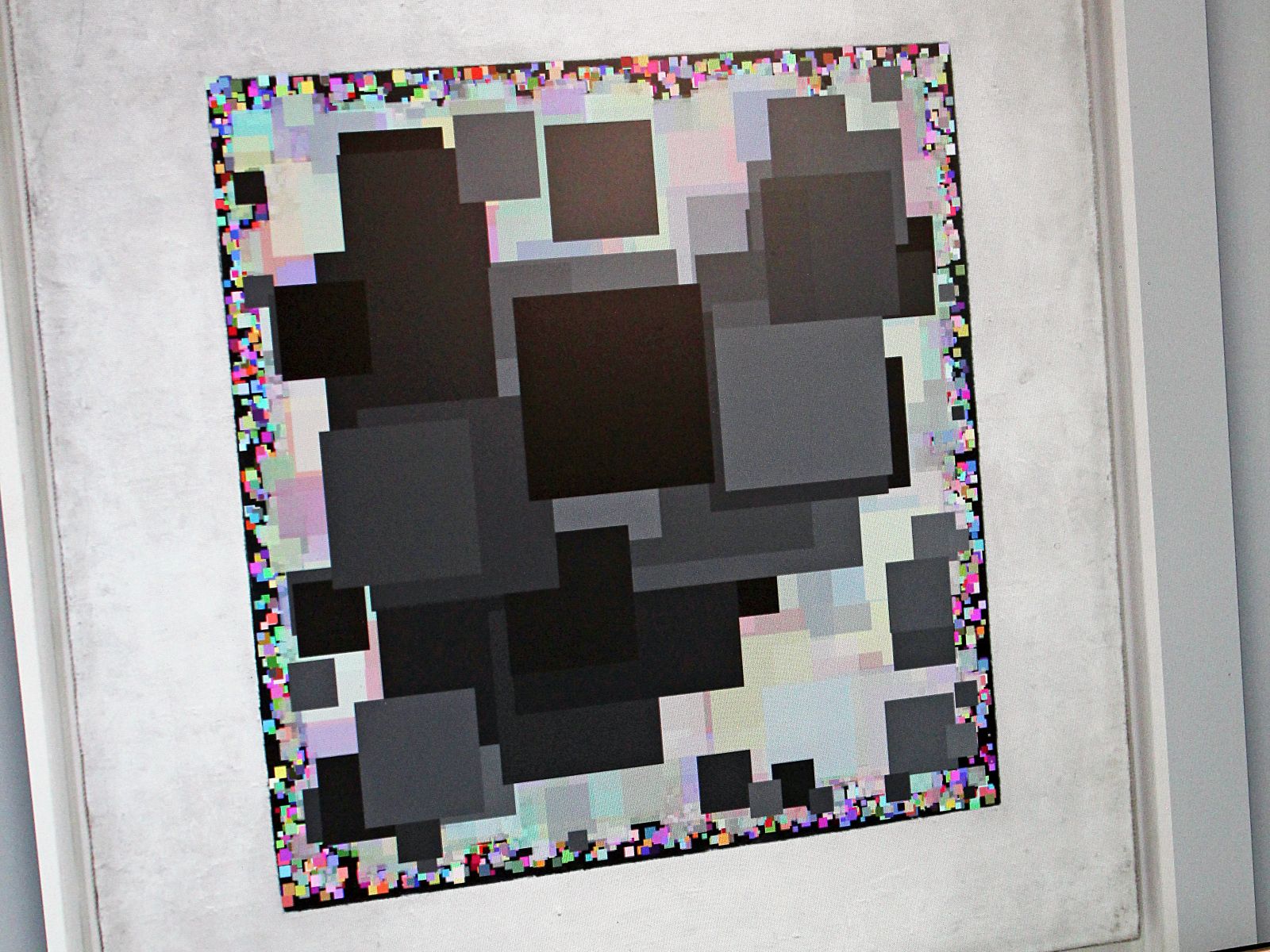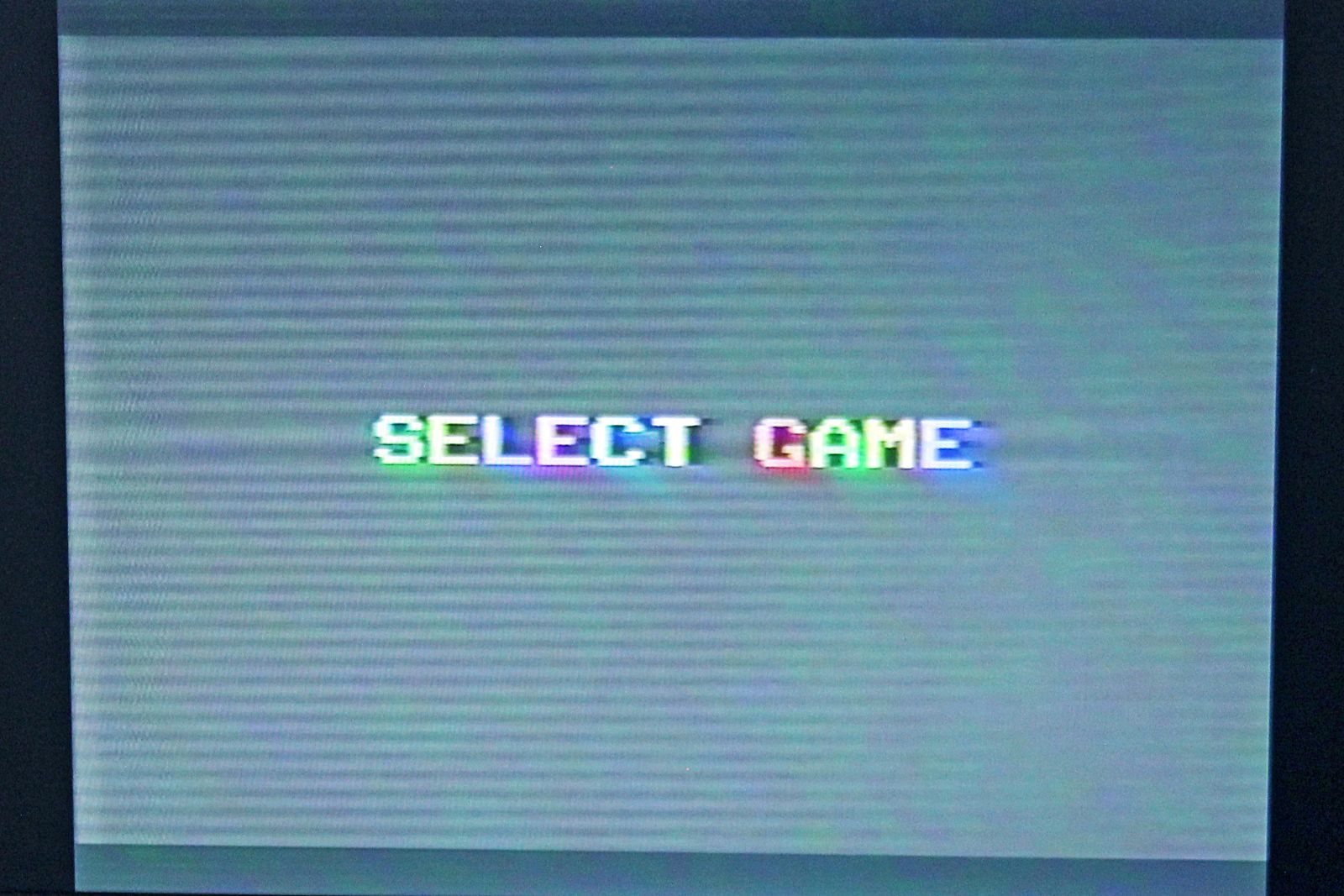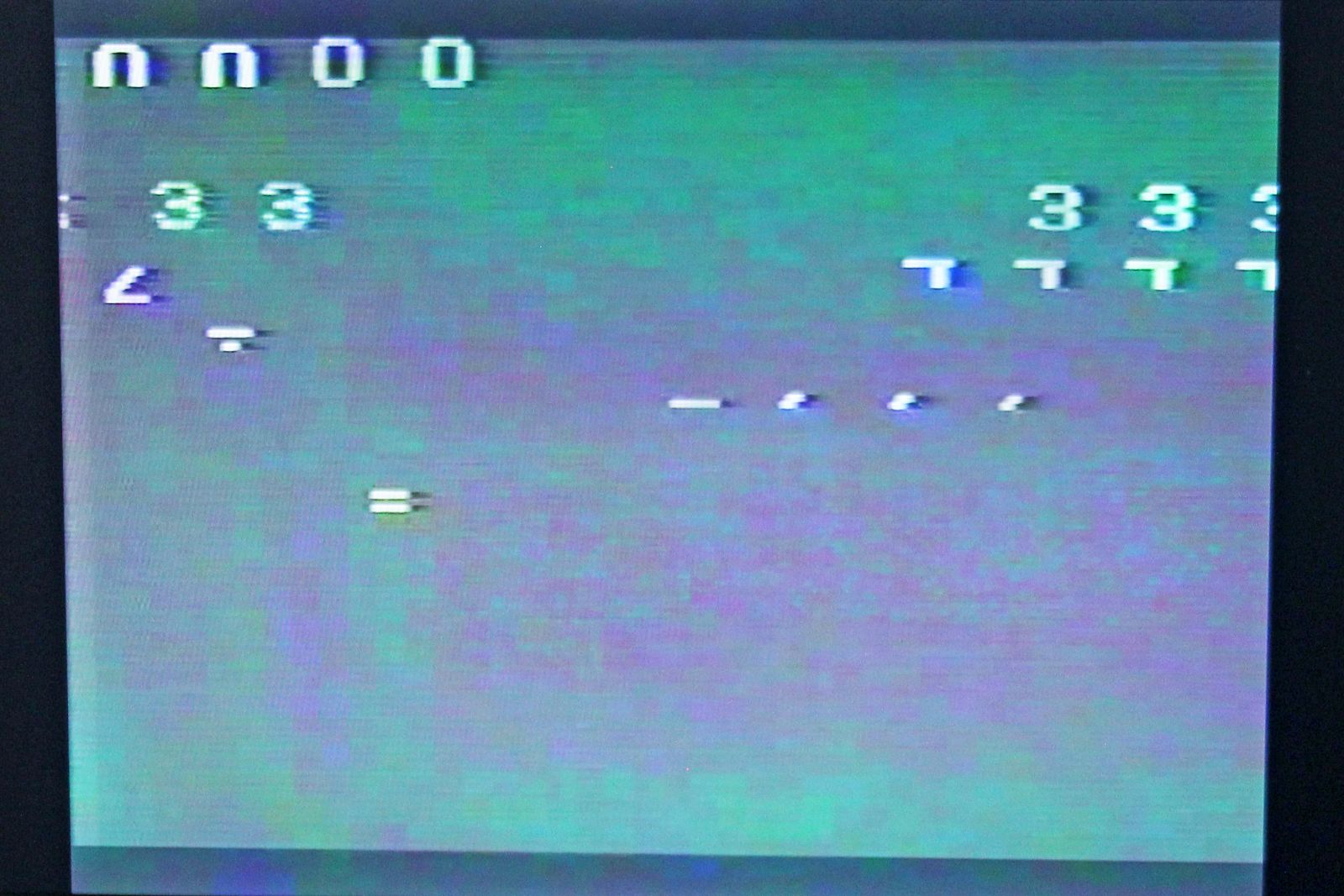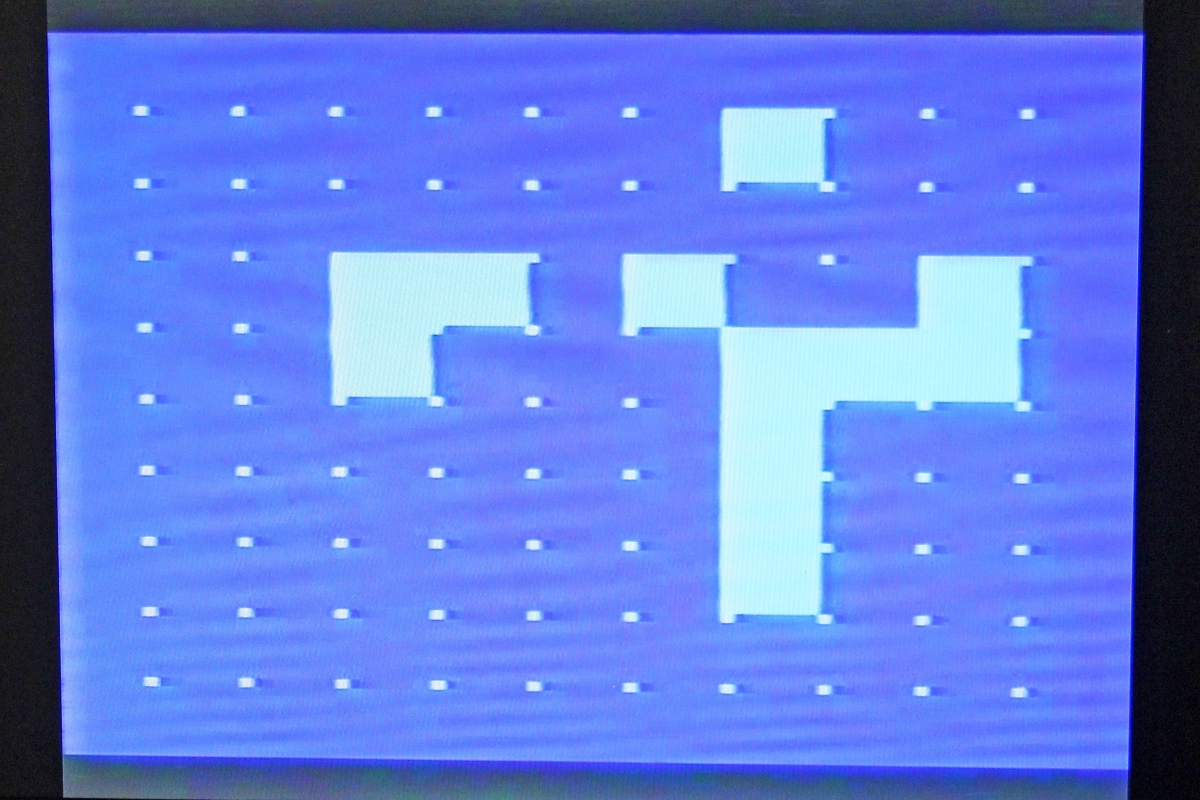Ceiling Cat
Eva Mattes & Franco Mattes
Italien/USA, 2016
Digitally printed sticker, 7 in x 4 inch.
Sticker of a cat-sculpture based on the internet meme: Cat peeping out of a hole in the ceiling.
Eva & Franco Mattes (*1976, Italy), artist duo based in New York City, USA.
Postcards from Google Earth - Redmon
Clement Valla
USA, 2010 ongoing.
Set of 10 offset postcards. 4 in x 6 inch, Screenshots from Google Earth, postcards and postcard racks, inkjet on paper, website.
Clement Valla is an Brooklyn-based artist who makes work in a wide range of media including photography, sculpture,software, and the internet.
Mood Disorder
David Horvitz
New Documents, 2015.
Offset, saddle-stitched book, soft cover. 9.875 in x 13.75 in, 72 pages. Edition of 2000.
Mood Disorder documents the propagation of a photograph of David Horvitz across the internet. The image—a self portrait of the artist with his head in his hands, ocean waves crashing in the background—was initially uploaded to the Wikimedia Commons, and placed on various Wikipedia pages. From there, the image began to circulate, appearing on over a hundred websites as a „stock“ photo to illustrate articles on a wide range of mental health and wellness issues.
The Dictionary of the Analogue // The Dictionary of the Digital
Jonathan Hanahan
USA, 2014.
Print-on-demand hard cover book. 6.125 in x 9.25 inch, 304 pages.
A book about language in both physical and digital environments, collecting words which contain alternative meanings in each world.
Jonathan Hanahan is a creative technologist and educator who loves the internet but is equally terrified by it. He uses technology to critique technology. His speculative practice explores the physical, cultural, and social ramifications of digital experiences and the role technology plays in shaping our everyday realities. He makes Thick Interfaces. These are tools, devices, software, artifacts, websites, and videos that agitate the digital facade and reveal the complexity existing underneath the thin veneer of our devices.
Blank on Demand
Netherlands, 2011
1 hardcover volume, 15.2×22.9cm, 740 pages, €999,999.99 on Lulu.com
1 paperback volume, 10.8×17.5cm, 40 pages, €5.44 on Lulu.com
Print on Demand technology allows to make a book without the intermediation of a publisher, setting autonomously size, amount of pages and price. Blank on Demand is an experiment that aims to probe the limits imposed by this production process. The two volumes constituting the project are produced through the self-publishing platform Lulu.com. The volumes’ formats correspond respectively to the maximum and minimum dimensions currently available for the print; similarly, page amount and price are set according to the limit values allowed by the platform. The two volumes are completely blank, except for the presence of the ISBN code. The experiment investigates the influence of the current technological context on the materiality of the book object.
The Black Book
Jean Keller
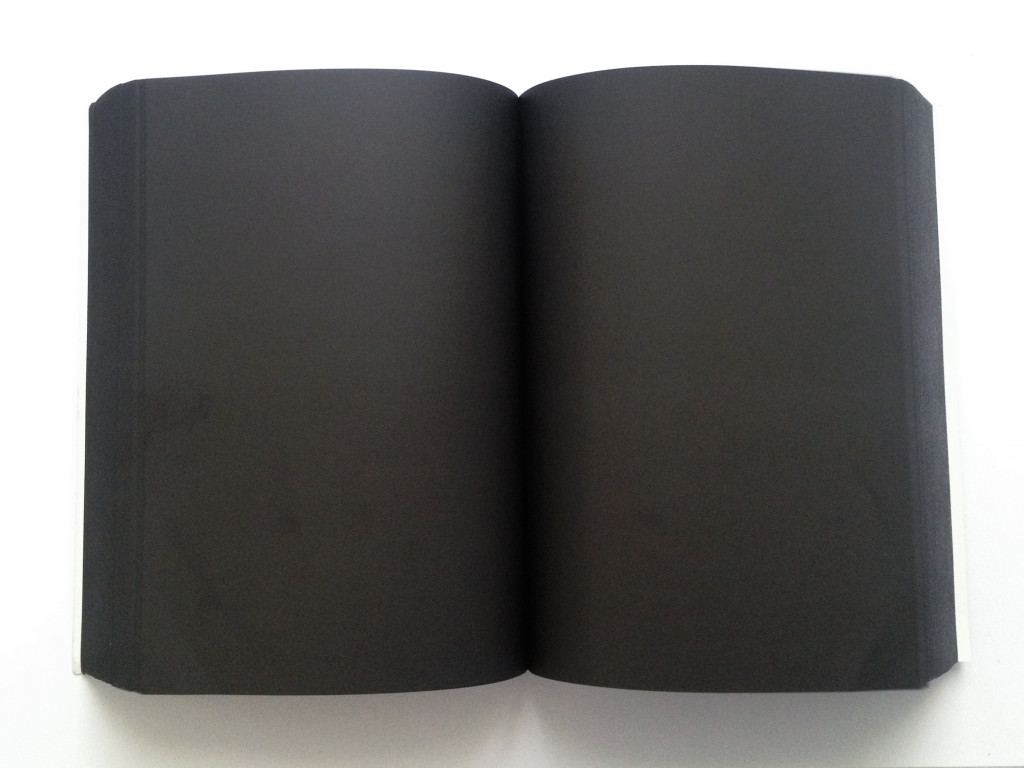
France, 2013.
Print-on-demand, perfect bound, soft cover. 5 in x 8 inch, 740 pages.
Ink used for digital printing is one of the most precious substances in the world. A single gallon of ink costs over four thousand dollars and this is one reason why digitally printed books are so expensive.
However, the price of a book is not calculated according to the amount of ink used in its production. For example, a Lulu book of blank pages costs an artist as much to produce as a book filled with text or large photographs. Furthermore, as the number of pages increases, the price of each page decreases. A book containing the maximum number of pages printed entirely in black ink therefore results in the lowest cost and maximum value for the artist. Combining these two features, buyers of The Black Book can do so with the guarantee that they are getting the best possible value for their money. (Jean Keller)
Spam Bibliography
Angela Genusa
USA, 2013.
Print-on-demand, perfect bound, soft cover book. 8,.5 in x 11 in.92 pages.
Every spam email received by the artist, listed in proper bibliographic formatting.
BANGed: A Monopoly on Truth
Angela Washko
USA, 2015.
Transeuropa. A visual transformation of Europe’s borders
Germany/China, 2017
Soft cover, 145 x 210 mm, 120 pages, 60 paintings, Edition: 150.
Book III
Jan an der Til
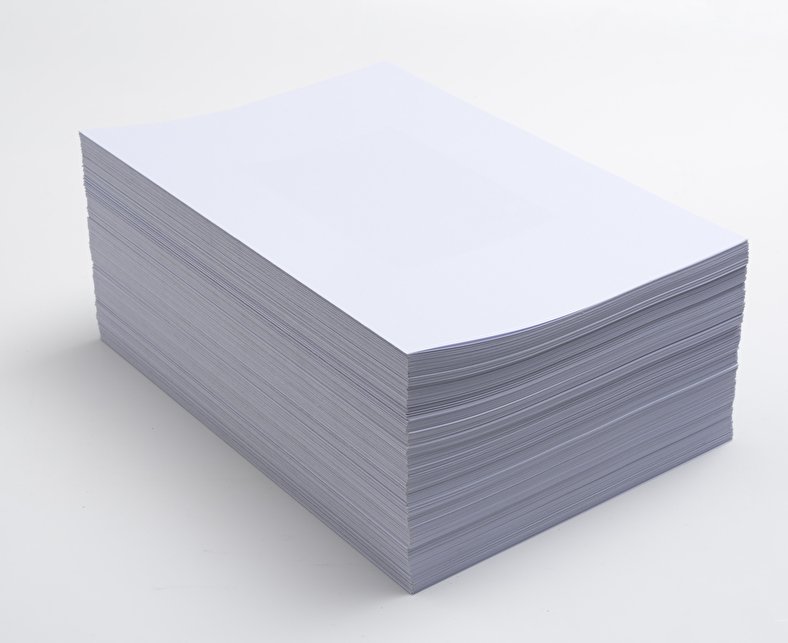
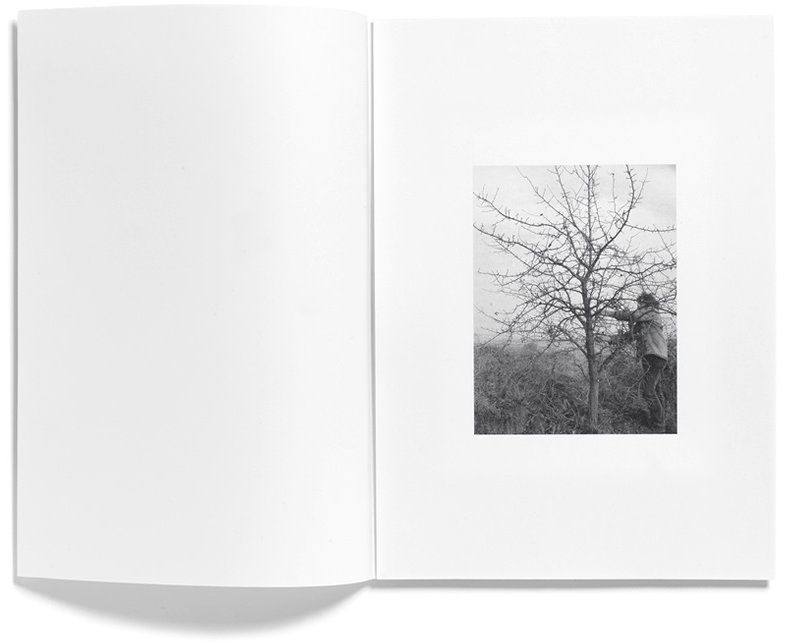
Niederlande, 2014
297 x 210 X 115 mm
250x A3, gefaltet, Clairefontaine DCP 120g Papier
500x A4 Discovery 75g Papier
Who watches the watcher
Heman Chong
Singapore, 2020.
The future is stupid
Jenny Holzer
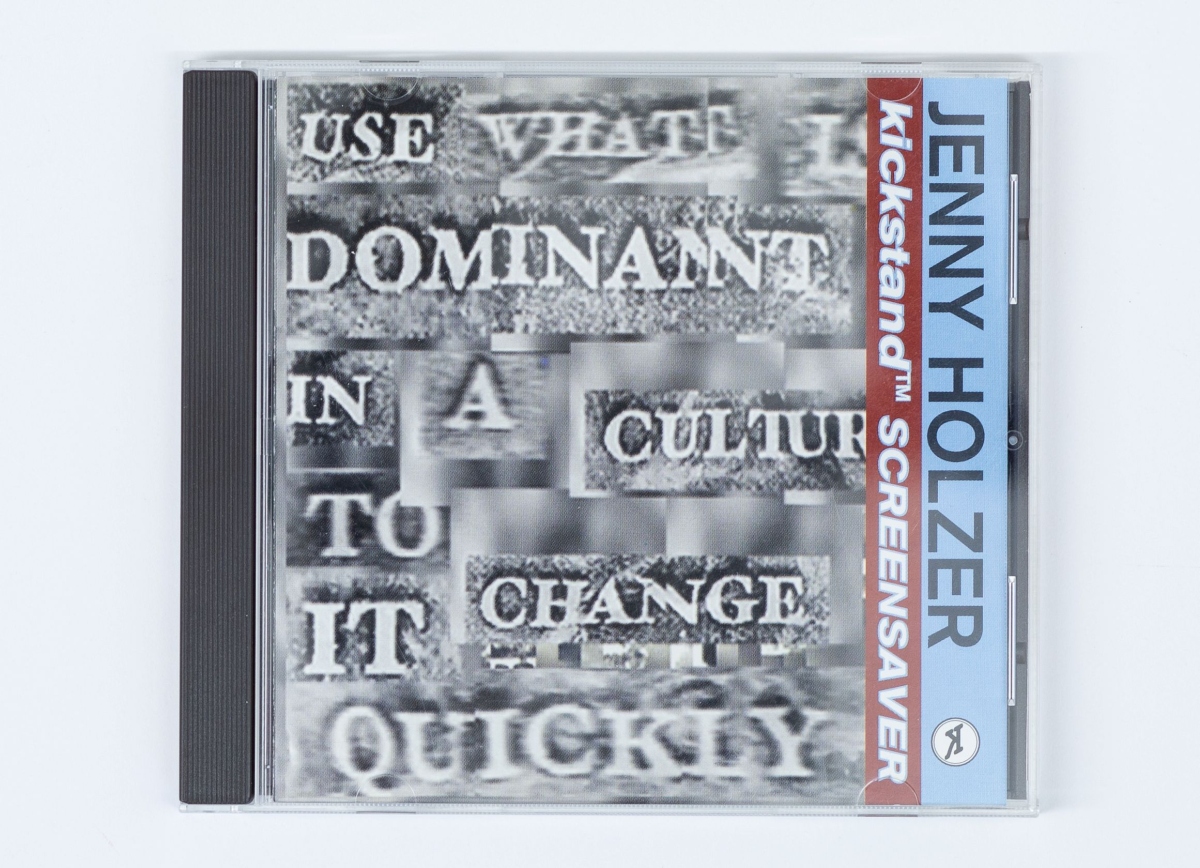
1997
Bildschirmschoner auf Computerbildschirm und CD ROM sowie Kickstand TM.
Bildskispringer
Jean-Francois Guiton
Deutschland, 2016.
Bildschirmschoner auf Computerbildschirm / Screen saver on computer screen
Das Bild eines Skispringers, von schräg vorne gesehen, wandert ruckartig über den schwarzen Bildschirm, dabei ändert er mit jedem Bildwechsel, der mehrere Sekunden dauert, seine Größe und Position. Unterlegt ist ein Sound, der an elektronische Störgeräusche erinnert, zuweilen einen Rhythmus bilden, bevor er sich wieder in klanglichem Chaos auflöst.
Die Arbeit ist als Computer-Bildschirmschoner realisiert, der nach Installation nach einer voreingestellten Zeit der Inaktivität des Rechners auf der Anzeige erscheint und sofort wieder verschwindet, sobald die Mouse bewegt oder die Tatstatur betätigt wird.
The image of a ski jumper, seen obliquely from the front, moves jerkily across the black screen, changing its size and position with each change of image, which takes several seconds. Underlaid is a sound reminiscent of electronic noise, sometimes forming a rhythm, before dissolving again into sonic chaos.
The work is realized as a computer screen saver, which, after installation, appears on the display after a preset time of computer inactivity and disappears again as soon as the mouse is moved or the keyboard is pressed.
Homage to Malewitsch
Frieder Nake
Deutschland 2018/20
Computerprogramm /Computer application
Mittels einen Computerprogramms erzeugt Frider Nake innerhalt eines auf dem Bildschirm abgebildeten Rahmens Quadrate, die sich in unterschiedlichsten Farben und Größen vermehren. Sie streuen sich innerhalb des gesetzten Rahmens vermeindlich willkührlich über die Fläche, werden kleiner und größer, verlassen dabei aber nie ihre horizontale/vertikale Ausrichtung.
Der abgebildete Rahmen und das Passepartout sind dabei dem Schwarzen Quadrat des russischen Avantgardisten Kasimir Malevitsch nachempfunden und bilden die Grundlage für Nakes Hommage. Das Zersplittern des schwarzen Quadrats in viele kleine und kleinere Quadrate und das Aufspalten in alle möglichen Farben hebt das Malewitsch-Quadrat in die Computerzeit der RGB-Darstellung und der digitalen Fragmeltierungen, bleibt dabei aber in den engen Grenzen, die das Bildschirmpixel als technische Grundlage vorgibt.
Using a computer application, Frider Nake creates squares within a frame displayed on the screen, which multiply in various colors and sizes. Within the frame they are scattered over the area in a seemingly arbitrary manner, becoming smaller and larger, but never leaving their horizontal/vertical alignment.
The illustrated frame and passepartout are based on the Black Square of the Russian avant-gardist Kasimir Malevich and form the basis for Nake's homage. The splitting of the Black Square into many small and smaller squares and the splitting into all possible colors lifts the Malevich Square into the computer age of RGB representations and digital fragmentation, but remains within the narrow limits set by the screen pixels as the technical basis.
Select Game
Marikke Heinz-Hoek
Deutschland, 1986.
DVD
Die Video-Arbeit von Marikke Heinz-Hoek spielt mit der Ästhetik der Computerbildschirm-darstellungen in den 1980er Jahren, in denen MS DOS das vorherrschende Betriebssystem für privat genutzte Computer war. Heinz-Hoek animiert Bilder, Fragmente und Sequenzen pixeliger Computergrafiken, Schriften und Störbilder, die schnell wechseln, sich verzerren, flackern und springen und somit an grafische Störungen oder Defekte erinnern.
Unterlegt ist das Video mit elektronischem Sound in einem Grenzbereich zwischen verzerrten Störgeräuschen und elektronischer Musik.
The video work by Marikke Heinz-Hoek plays with the aesthetics of computer screen representations in the 1980s, when MS DOS was the predominant operating system for privately used computers. Heinz-Hoek animates images, fragments and sequences of pixelated computer graphics, fonts and disturbing images that change quickly, distort, flicker and jump, thus reminding us of graphic disturbances or defects.
The video is underlaid with electronic sound in a border area between distorted noise and electronic music.
